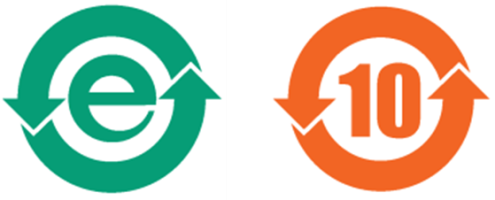Table of Contents
If you manufacture, sell, or ship electronics into China, RoHS compliance isn’t optional, it’s law. And it’s tightening.
China RoHS 2, officially titled the Administrative Measures for the Restriction of the Use of Hazardous Substances in Electrical and Electronic Products, isn’t a copy-paste of EU RoHS. It’s a different beast — with its own testing rules, labeling system, and enforcement methods, all under the watchful eye of MIIT.
And with the 2024 phthalates amendment now in force and a new mandatory standard (GB 26572-2025) pending, time’s running out.
China RoHS 2 Scope: 12 Product Categories, No Wiggle Room
Back in March 2019, MIIT launched the Standard Management Catalogue listing 12 EEE product types that fall under mandatory RoHS compliance in China:
- TVs, monitors, smartphones, computers
- Refrigerators, air conditioners, washing machines
- Printers, copiers, fax machines
- Telephones and electric water heaters
If your product is listed, compliance is mandatory. There’s no “self-declare and wait” like in the EU.
10 Restricted Substances: Same Thresholds, Stricter Deadlines
China RoHS 2 currently restricts the same 10 substances as EU RoHS 3, measured at the homogeneous material level:
The phthalate restriction becomes enforceable on January 1, 2026 under Amendment No. 1 to GB/T 26572-2011.
EFUP Isn’t Cosmetic — It’s a Legal Declaration
If your product contains restricted substances above the threshold, you must:
- Declare the Environmental Protection Use Period (EFUP)
- Use the official China RoHS label from SJ/T 11364-2024
- Specify the number of years before hazardous substance leakage risk
- Label your product physically and digitally — yes, QR codes and on-screen displays count
Mislabeling? That’s not just a mistake. It’s a compliance violation.
SJ/T 11364-2024 Marking: Don’t Skip It

Whether you meet the limits or exceed them, your product must include:
- The “e” mark (green circle) if compliant
- The orange hazardous substance mark if not
- The EFUP icon
- A hazardous substance content table
- Traceability and supplier contact info
No label = no market access. It’s that simple.
Exemptions Exist — But They’re Not the EU Annex
China maintains 39 RoHS exemptions, but they don’t mirror EU RoHS Annex III.
Examples include:
- Lead in solders and alloys
- Mercury in backlights
- Cadmium in color conversion layers
If you’re not explicitly listed, you’re not exempt. And “but we’re exempt under EU RoHS” won’t help.
EU RoHS vs China RoHS 2: What’s the Difference?
Testing Just Changed: Are You Using the Right Standards?
As of March 1, 2024, China RoHS testing must follow the GB/T 39560 series, not the outdated GB/T 26125.
This aligns with IEC 62321, but beware:
- Old test reports are invalid
- You need fresh lab data
- Conformity documentation must show at least 70% component-level test reports for Category I products under the upcoming GB 26572-2025
Important:
- Test reports from non-China labs may be rejected unless:
- They follow GB/T 39560 (aligned with IEC 62321)
- The lab is CNAS-accredited
- The report is less than 2 years old and component-level
When in doubt, test again, inside China.
Enforcement Is Real: CCC, Fines, and Recalls
Enforcement is carried out by:
- MIIT and SAMR
- Local customs authorities and product surveillance teams
- CCC audit bodies
Labeling non-compliance, outdated testing, or unverifiable supplier declarations are all enforcement triggers, often without prior warning.
RoHS compliance in China is tied to the CCC system. That means:
- Random market surveillance
- Third-party lab reviews
- Documentation audits
- Fines, enforcement actions, or product bans if you’re non-compliant
What’s Coming: GB 26572-2025
On August 1, 2025, MIIT officially published GB 26572-2025, replacing GB/T 26572-2011. This isn’t a guidance document — it’s a mandatory “GB” standard that will go into full effect on August 1, 2027.
The standard:
- Reconfirms the 10 restricted substances
- Defines technical documentation obligations by product category
- Requires ≥70% component-level test reports for Category I products
- Clarifies that not all high-risk components need individual testing
- Reclassifies GB RoHS from a “recommended” (T) to “a mandatory” (GB) system
Conformity Assessment Under GB 26572-2025
GB 26572-2025 introduces a dual-category approach to documentation and enforcement:
Category I Products (within MIIT’s Catalog):
Must have:
- Complete supplier declarations
- ≥70% tested components
- Full EFUP labeling
- Traceable documentation for Customs review
Category II Products (outside the Catalog):
- Not required to submit documentation, but must still follow EFUP and marking rules.
If you can’t trace the source of your materials, you’re exposed to enforcement — especially through Customs and local SAMR audits.
What You Should Do Now
Here’s your non-negotiable action list if you want to keep selling into China:
Audit your supply chain: Check every component for 10 RoHS substances Update declarations and test reports to GB/T 39560 Track exemption usage under the China-specific 39-list Label accurately using SJ/T 11364-2024 Get phthalate testing done before January 1, 2026
Let Acquis Help You Get There Faster
RoHS isn’t static, and you can’t afford to be reactive.
Acquis automates China RoHS 2 compliance so you can:
- Track substances and exemptions
- Flag BOM risks
- Assign EFUP values and generate labels
- Prepare audit-ready technical files
- Stay ahead of MIIT deadlines
Book a 20-minute demo with our compliance experts. Find your risks — and fix them before MIIT does.
